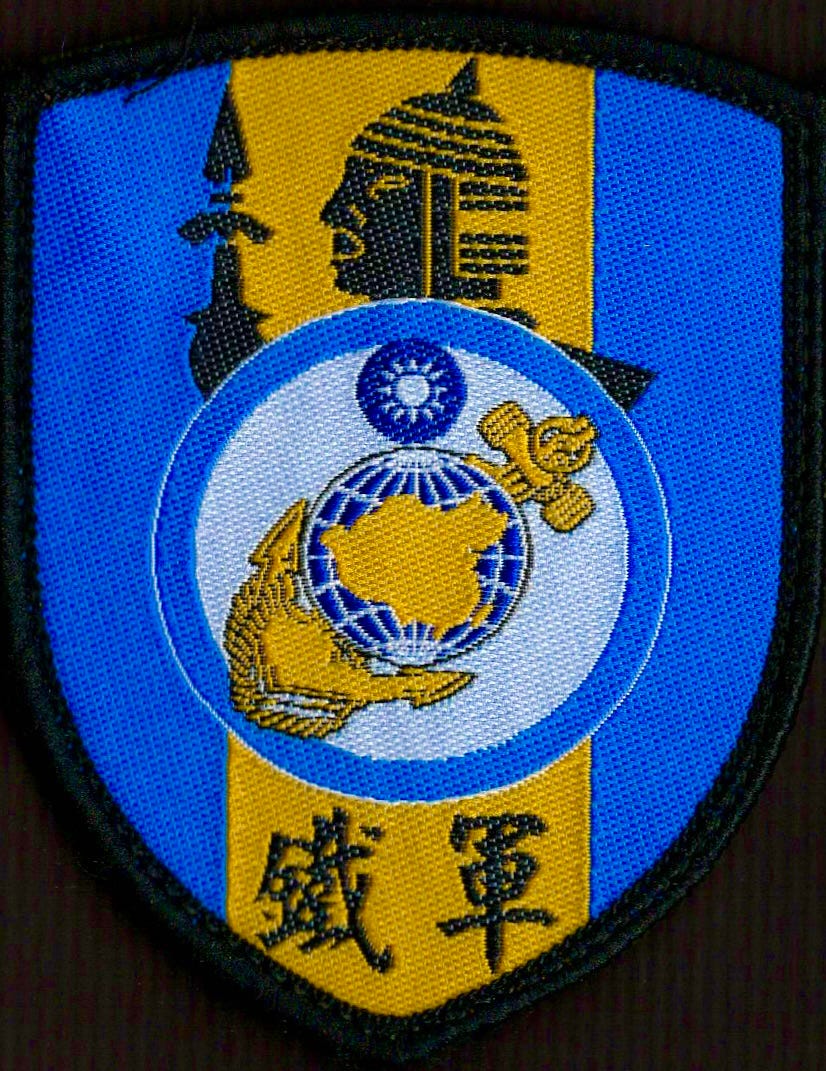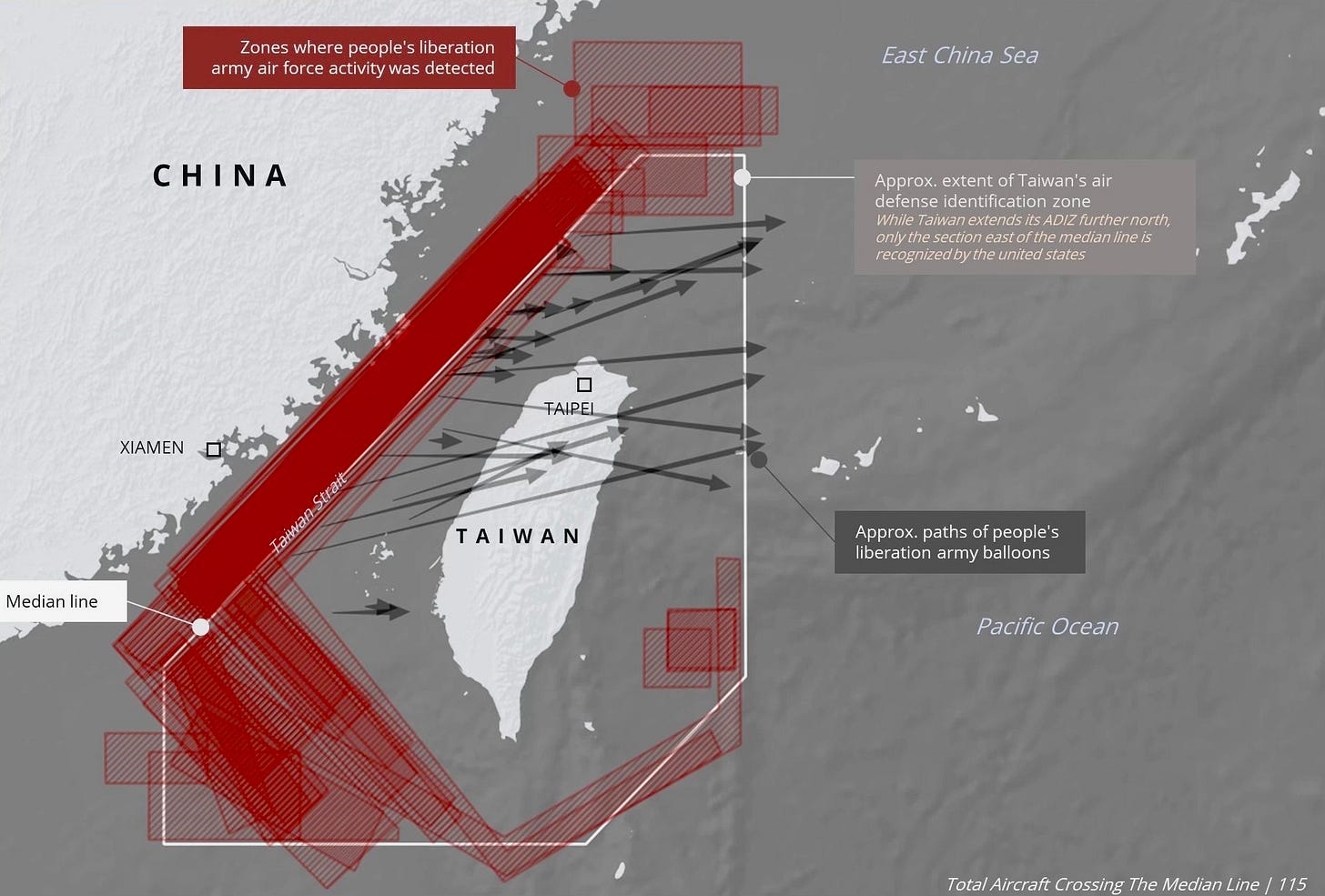China In Arms BOOKSTORE and GIFT SHOP!
Follow on Twitter
Subscribe: $5 Month/$50 Annual (unable to secure a subscription contact the bank for permission for Stripe deposits).
Updated 11 March 2024
China Building Wall Between Taiwan and Pratas Island
Can Taiwan Handle the Loss of 500 Men?
By Wendell Minnick (Whiskey Mike) 顏文德
TAIPEI - Now that Chinese New Year is finally over, Beijing has elevated the number of air patrols between Pratas Island (Dongsha Island, 東沙群島) and Taiwan. This is not without historical precedence as China’s air and naval power has been conducting extensive patrols between the two for a few years.
But the below maps and two press releases (2023 February 2 and 1, respectively) from Taiwan’s Ministry of National Defense (MND) speaks volumes.
There has been speculation in defense circles in Taiwan that China will attempt to seize the island by force.
And why not?
Taking the island has great military strategic benefits for China.
First, it is the northern most island in the South China Sea (SCS) and nearest to Taiwan. Pratas could be assimilated into China’s vast spider web of SCS islands hosting anti-ship and air defense missile batteries, radar, ports, signal intelligence, and air bases.
Second, Pratas has one of the longest runways in the SCS at 5,085 ft (1,550 m), though China continues to expand and upgrade runways on SCS islands it occupies.
Pratas is also the largest island in the SCS, allowing for the construction of a variety of surveillance facilities.
It makes perfect logic for China to take Pratas for an air base and, perhaps a naval base, that would bring China directly under Taiwan’s underbelly providing for a new angle of attack and a projection of power not just with aircraft, but with radar and other surveillance systems.
Third, taking the island would be fairly easy and a great boost for morale for the Chinese military. It is defended by 500 Marines from Taiwan’s 99th Brigade that augments lightly armed Coast Guard personnel. Taiwan President Tsai’s decision to place military forces on Pratas in 2020 was criticized by some for militarizing the island and giving the Chinese little choice but to use lethal force to take it. In the past, on Pratas the Coast Guard were considered merely caretakers and were trained by the Marine Corp with light weapons.
The sad fact of the matter is that Taiwan only has two Marine Brigades: 99th (Iron Fist) and 66th Brigade (Vanguard). It is not clear how many personnel are in a Taiwan Marine Brigade compared to a U.S. Marine Regiment. Taiwan’s MND keeps these numbers muddled.
In fact, it is known that their Army brigades are not comparable to U.S. Army brigades. And that the Taiwan Army will move men from one brigade to another during exercises to give the media the appearance of a full brigade. Call them ghost soldiers or whatever, but the numbers game with Taiwan’s MND reminds one of the Vietnam ARVN numbers from the Pentagon Papers.
Whether Pratas actually has 500 Marines is also not clear. But assuming it is true, to lose 500 Marines for an undefendable island no bigger than 430 acres makes no logical strategic sense.
And it will not be siege warfare like the Alamo or Masada - the island is basically a flat sandy beach. It will take China’s Navy and Marine Corp an afternoon to seize the island.
Whether the Taiwan Marine Corp commander surrenders or fights will be based on whether communication between Pratas and Taiwan is severed. If the commander is a “true” Marine, no surrender. However, Taiwan’s Marine Corp is not the same as U.S. Marines (more like Private Hudson).
Taiwan plans to arm the island with shoulder-launched Kestrel close-range anti-armor rockets; two rockets available: 150 meter (492 ft) range High-Explosive Squash Head (HESH) and 400 meter (1312 ft) range High-Explosive Anti-Tank (HEAT). Beyond that, there does not appear to be anything beyond that capability besides light weapons, including mortars.
Fourth, taking Pratas would be the last island on the list and its proximity to Taiwan cannot be ignored. The island is only 420 km (260 miles) from Kaohsiung City. Taiwan’s southern access via the SCS was already under serious concern after China’s 2013 threats to close the air space for military aircraft used for transporting troops and equipment via the Air Force’s 19 C-130H cargo transports.
Click to Enlarge:
END






